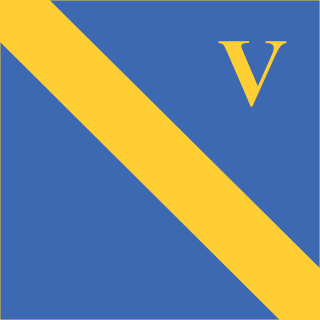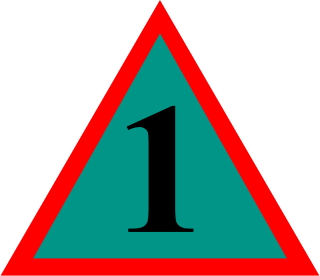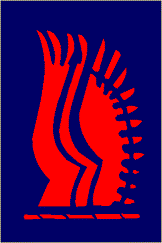
The 4th Infantry Division was a regular infantry division of the British Army with a very long history, seeing active service in the Peninsular War, the Crimean War, the First World War, and during the Second World War. It was disbanded after the war and reformed in the 1950s as an armoured formation before being disbanded and reformed again and finally disbanded on 1 January 2012.

The 5th Infantry Division was a regular army infantry division of the British Army. It was established by Arthur Wellesley, 1st Duke of Wellington for service in the Peninsular War, as part of the Anglo-Portuguese Army, and was active for most of the period since, including the First World War and the Second World War and was disbanded soon after. The division was reformed in 1995 as an administrative division covering Wales and the English regions of West Midlands, East Midlands and East. Its headquarters were in Shrewsbury. It was disbanded on 1 April 2012.

The 1st Armoured Infantry Brigade is an infantry brigade of the British Army with a long history including service during both the First and the Second World Wars. It is based at Tidworth Camp. Previously, it has been designated 1st (Guards) Brigade, 1st Infantry Brigade, 1st Mechanised Brigade, and under the initial Army 2020 reforms assumed the title of 1st Armoured Infantry Brigade.

The 24th Infantry Brigade was an infantry brigade of the British Army from the First World War. It was reraised during the Second World War, as the 24th Infantry Brigade (Guards). During various designations, the brigade was active throughout the Cold War and existed until 1999, when it was merged with the 5th Airborne Brigade to become the 16 Air Assault Brigade.
The 10th Armoured Brigade was a short-lived armoured brigade of the British Army in the Second World War. It had been converted in November 1941 from infantry battalions, but had never seen action and was disbanded in late 1943.
The 36th Infantry Brigade was an infantry brigade formation of British Army that fought in the First World War, as part of 12th (Eastern) Division, on the Western Front. The brigade also fought in the Second World War, with the 12th (Eastern) Infantry Division, in France, and later with 78th Infantry Division in Tunisia and Italy.

The 9th Armoured Division was an armoured division of the British Army, raised during the Second World War. It never saw active service during the war as a complete division.
The 10th Infantry Brigade was a Regular Army infantry brigade of the British Army. During the First and the Second World Wars, the brigade was part of the 4th Infantry Division.

The 29th Infantry Brigade was an infantry brigade unit of the British Army. It was originally raised in 1914 and saw service during the First and Second World Wars and the Korean War.
228th Brigade was a formation of the British Army in both the First and Second World Wars.
The 210th Independent Infantry Brigade (Home) was an infantry brigade formation of the British Army organised during the Second World War to command a group of newly raised Home Defence battalions. It was later converted to a frontline brigade that served with distinction in the later years of the war, the 38th (Irish) Infantry Brigade.
The 155th Brigade was an infantry brigade of the British Army that saw active service in both the First and the Second World Wars. Assigned to the 52nd (Lowland) Division, the brigade saw active service in the Middle East and on the Western Front during the First World War. During the Second World War, now the 155th Infantry Brigade, it continued to serve with the 52nd Division in Operation Dynamo, and later in North-western Europe from late 1944 until May 1945.
The 157th Brigade was an infantry brigade of the British Army. The brigade fought in both the First and the Second World Wars, assigned to 52nd (Lowland) Infantry Division.
The 212th Brigade was a Home Service formation of the British Army during the First and the Second World Wars.
The 213th Brigade was a Home Defence and training formation of the British Army during both the First and Second World Wars.
The 216th Brigade was a Home Service formation of the British Army during the First and the Second World Wars.
The 33rd Army Tank Brigade was an armoured brigade formation of the British Army raised during the Second World War.
203rd Infantry Brigade was a Home Defence formation of the British Army during the Second World War.
The 202nd Independent Infantry Brigade (Home) was a short-lived Home Defence formation of the British Army during the Second World War.
The 209th Infantry Brigade was a Home Defence formation of the British Army during the Second World War.





